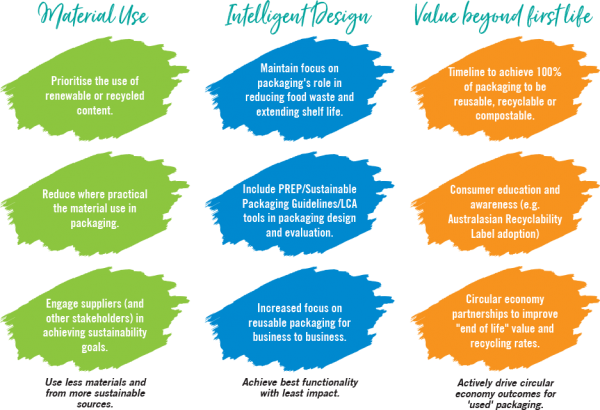What it Means
Packaging plays a critical role in reducing food waste, maintaining the integrity and safety of our products, and communicating with consumers. Goodman Fielder is committed to finding more sustainable ways to deliver these outcomes.
Our approach to sustainable packaging recognizes the need for circular economy outcomes and is focused on the role we can play in this transformation.
Whether our product packaging is recycled depends on a range of factors, including available infrastructure in the markets we operate and access to recycling collection points for our consumers. Within our control is designing our packaging and selecting materials that are aligned with proven recycling infrastructure & science.
We are currently working on what our sustainable packaging strategy looks like in 2026 and beyond based on what is an evolving landscape and look forward to sharing this with you.
We have three core philosophies that will enable us to achieve our packaging goals:
-
Material Use- reduce the total material used while also prioritising more sustainable materials
-
Intelligent Design- achieve best functionality with least impact through smart design
-
Value Beyond First Use- actively drive circular economy outcomes for ‘used’ packaging

What We’ve Achieved
We have made significant progress towards our sustainable packaging goals. For example, in 2020 we redesigned packaging to use 185 tonnes less plastic and 100 tonnes less cardboard per year. We also replaced 100 tonnes per year of problematic PVC trays by switching to PET. The new trays also include 30% recycled content as part of our support of a circular economy for plastics.
Goodman Fielder’s Australian Packaging Covenant Annual Report can be found here.
What’s Next
We will continue our focus on driving circular economy solutions for our packaging including replacing 100 tonnes of virgin plastic with recycled content and eliminating the remaining PVC from our retail packaging across Australia and New Zealand.
